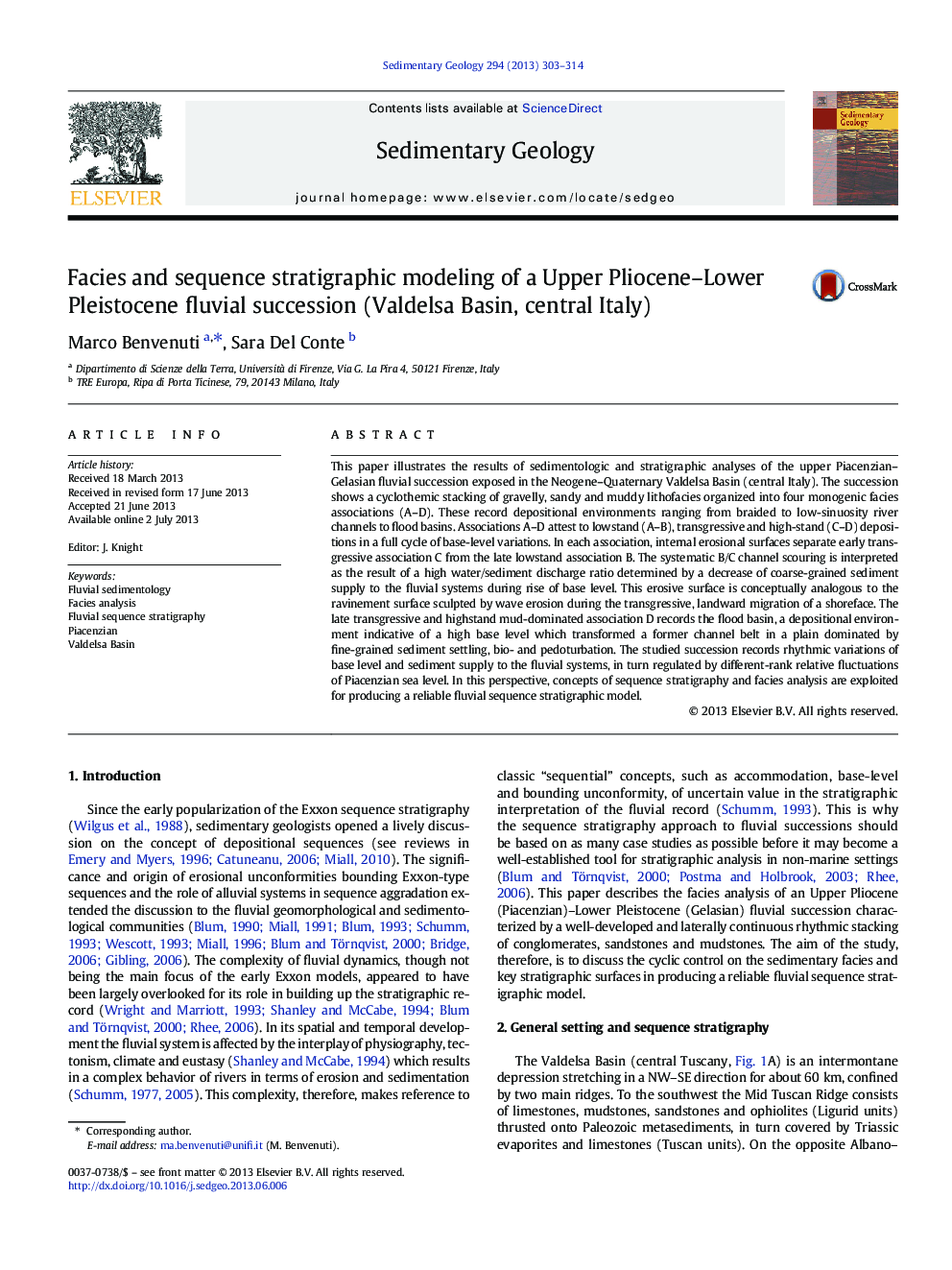| کد مقاله | کد نشریه | سال انتشار | مقاله انگلیسی | نسخه تمام متن |
|---|---|---|---|---|
| 6433223 | 1636069 | 2013 | 12 صفحه PDF | دانلود رایگان |

- Facies analysis is applied to Piacenzian-Gelasian fluvial deposits.
- Monogenic facies associations define specific fluvial depositional environments.
- Hybrid facies associations record full cycles of base-level variations.
- Hybrid facies associations are discussed in sequence-stratigraphic terms.
This paper illustrates the results of sedimentologic and stratigraphic analyses of the upper Piacenzian-Gelasian fluvial succession exposed in the Neogene-Quaternary Valdelsa Basin (central Italy). The succession shows a cyclothemic stacking of gravelly, sandy and muddy lithofacies organized into four monogenic facies associations (A-D). These record depositional environments ranging from braided to low-sinuosity river channels to flood basins. Associations A-D attest to lowstand (A-B), transgressive and high-stand (C-D) depositions in a full cycle of base-level variations. In each association, internal erosional surfaces separate early transgressive association C from the late lowstand association B. The systematic B/C channel scouring is interpreted as the result of a high water/sediment discharge ratio determined by a decrease of coarse-grained sediment supply to the fluvial systems during rise of base level. This erosive surface is conceptually analogous to the ravinement surface sculpted by wave erosion during the transgressive, landward migration of a shoreface. The late transgressive and highstand mud-dominated association D records the flood basin, a depositional environment indicative of a high base level which transformed a former channel belt in a plain dominated by fine-grained sediment settling, bio- and pedoturbation. The studied succession records rhythmic variations of base level and sediment supply to the fluvial systems, in turn regulated by different-rank relative fluctuations of Piacenzian sea level. In this perspective, concepts of sequence stratigraphy and facies analysis are exploited for producing a reliable fluvial sequence stratigraphic model.
Journal: Sedimentary Geology - Volume 294, 15 August 2013, Pages 303-314